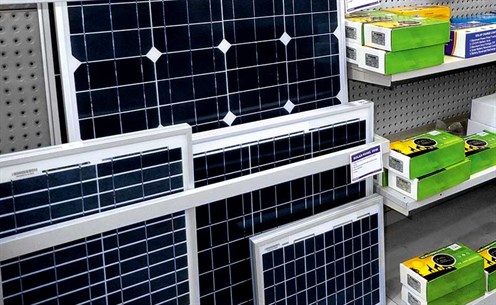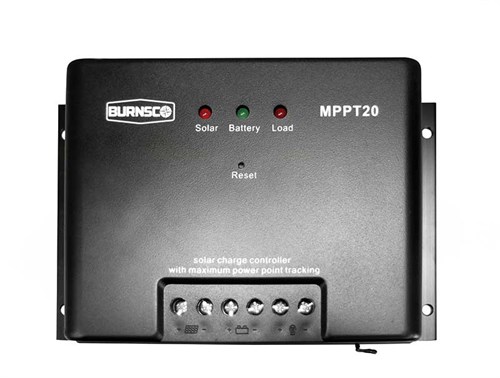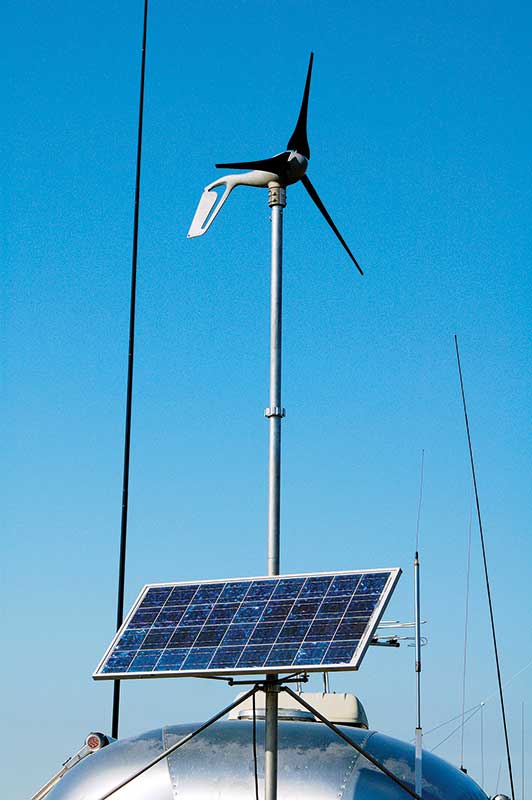Solar power is such a fertile subject at Happy Hour when RVers chew the fat over this and that. What have you got? Does it do the job? How can I make mine better?
Typically, a medium-sized RV with an LPG fridge uses around 40a/hrs* of battery power per day. Double that to 80a/hrs if the RV has a 12-volt compressor fridge.
For optimum battery health, these amp per hours should be put back into the battery as soon as possible. The size and sophistication of a solar power system required to do this is dictated by how many and how quickly amps per hour are to be replaced.
Solar power systems are evolving all the time, becoming more efficient and less costly in the process. For situations where mains power is not available for battery recharging, solar power has become the popular option.
Solar panels

Solar panels commonly used on RVs are either monocrystalline or polycrystalline. The difference lies in the manufacturing process. Monocrystalline panels have purer, more efficient silicone cells, and are physically slightly smaller.
In the past, they have been more expensive than polycrystalline cells, but today, panels of the same output and quality are of similar price.
In fact, at the moment, it is better to use quality and length of warranty rather than price as a buying guide, with the best panels having a 25-year performance warranty and a 10-year manufacturing, workmanship warranty.
Solar regulators

The next item down the line is the solar regulator. These come in three varieties. First is the inexpensive but reliable on/off controller, suitable for small solar panels and small battery situations. Next is the mid-range PWM (pulse width modulation) regulator that monitors and regulates current flow in a battery-friendly way that helps extend battery life.
Last is the top-range MPPT (multi power point tracking) regulator, particularly suitable for arrays of three or more panels. It may include a three- or four-stage charging regime that extends battery life.
Collyn Rivers, in his excellent book Motorhome Electrics, says, “An MPPT acts like an electronic torque converter, automatically adjusting module output to system input... typically increasing usable energy by 15–20%.”
Anecdotal evidence suggests gains of this magnitude are difficult to achieve on smaller systems such as the majority of those in New Zealand RVs, which have one or two panels and one or two batteries.
Choosing quality and sophistication when selecting a regulator may produce a better outcome for your particular system. Opting for features such as temperature compensation when charging—to avoid overcharging when it is hot or undercharging when cold—could extend your battery life and save you money.
Instead of choosing a more expensive MPPT regulator, a PWM regulator $100 less in price with extra features suitable for your particular application could produce a better result.
Making a choice
Deciding which regulator to buy highlights the fact that choosing the components of a solar panel system for an RV is not a simple process.
Unless you have the necessary knowledge to carry out the project, and time to do the research, it might be best to call in a qualified professional, who could save you money in the long run.
*To replace 40a/hrs used overnight, I have a 190-watt panel charging a 110a/hr AGM house battery through a 20amp MPPT regulator. It works fine, spring through summer to autumn but is not always self-sufficient in the depths of winter. Thanks to Steve Holt-Pedersen from Absolute Power Ltd for providing the insights into the world of solar energy.







